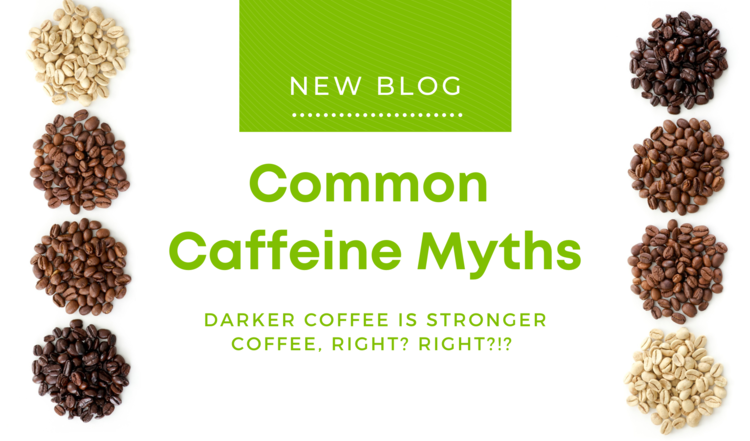“I like my coffee strong and dark. The darker, the stronger, the darker, the better!”
This is something heard on the regular at our coffee shop. Often the words dark and strong are synonymous for coffee drinkers.
While darker roasted coffees might be bolder in specific flavor notes and aromas, this does not mean that the coffee itself is stronger. Much of this confusion can be attributed to clever marketing schemes that advertise dark roasted coffee to be “strong,” “full-bodied,” or “bold.” While this is not entirely inaccurate, it is pretty misleading. Dark roasted coffee typically boasts smoky, roasty, ashy, sooty, and acrid flavors.
Shop our signature Baba Java coffees here!
The Myth about Dark Coffee
Think about toasting a piece of bread for breakfast. If the slice of bread is toasted too long, it grows darker in color and the flavors are burnt and ashy, which are bitter and tend to linger in your mouth unpleasantly for too long. If that is classified as strong, then there you have it!
However, when food is burnt, most of its flavor is singed away, leaving only certain kinds of flavor, which might be considered strong, but not exactly palatable compared to what flavors could have been tasted.
It is precisely this point that is the quintessence of this blog post.
Dark Roasted Coffee
A “French Roast” or “Italian Roast” coffee is dark roasted coffee, which is often marketed towards coffee drinkers who like their coffee “extra strong.” Suppose you were to buy a bag of coffee that holds one of these titles. In that case, the appearance of the bean will most likely be dark brownish-black, exceptionally oily on the outside, and aromatic with smoky and even tobacco-like overtones. Many are inclined to believe this is the ideal standard of coffee.
Coffee Roast Vs. Coffee Strength
We mentioned that the common misconception is that the darker the coffee is roasted, the stronger and bolder it has to be. Believe it or not, it’s the opposite! While this commonly accepted truth is widely debated, there is just too much compelling evidence that goes against this myth.
Lighter roasts, in many ways, are “bolder.” But what does this mean? Descriptions like “bold” and “strong” hold different meanings to everyone, so personal preference is certainly a factor. However, like our example with the toasted bread, this myth did not become common knowledge simply because of false advertising or marketing schemes. One of the real reasons dark roasted coffee is associated with strong coffee is because of the effect it has on our taste buds.
Burnt flavors permeate across the sensors of our tongues in ways that would be similar to chomping into a highly overcooked strip of bacon. The bitter, ashy, and acrid flavors tend to linger in the aftertaste–at times, creating the illusion that the flavor is stronger.
The truth is: how strong your coffee is not determined by how it is roasted. It’s how you brew it!
How Brewing Method Impacts Coffee Strength
So, the strength of the coffee is in the cup, not the roast.
Consider the strength difference between espresso and a filter brewed coffee. You don’t have to be an expert to immediately detect the difference. A lighter roasted coffee is stronger in acidity (and it has more caffeine, contrary to popular belief!). Dark roasted coffee can be less acidic, but the flavors give the illusion that they are stronger because of how it permeates the taste buds and exhibits stark, pungent flavors which we have priorly discussed.
So, if it’s the bleak hours of early morning, and you’re in need of more than just a warm, comforting pick-me-up to start your day–we have a few tips that can certainly help. If it’s a strong and bold cup of coffee you are looking for, don’t look for the darkest roast attainable, look for the right brewing recipe!
Take our Brazil coffee for example. It’s a medium roast and has the flavor notes of chocolate and walnut. All in the way it is brewed, it can be very light and almost tea-like; or, it can be full-bodied, stout, and still smooth. Here are two recipes depending on how you want your coffee.
Brewing Strong Coffee
We recommend a 15:1 recipe, that is 1 part coffee to 15 parts water. Having a scale is definitely helpful in determining the best way to brew your coffee and ensuring it’s repeatable. This works for any single-cup brewer, whether that’s a V60, AeroPress, French Press, or our Camel Cup brewers.
If you need more than one cup and don’t want the hassle of taking too much time to prepare multiple hand-brewed cups, automatic drip machines can be brewed the same way!
Brewing A Flavorful Lighter Cup
For a lighter cup with great flavor, try a 17:1 ratio instead!
At our shop, we typically brew our pour-overs at a 16:1 ratio, a nice balanced strength cup with lots of bold flavors yet little astringency. Anyone who has questions about this topic and how to get more out of your brew–we are always here to help and answer any questions.
The coffee roast should always showcase the best potential of flavors, aroma, and body that the particular coffee can. Strength is all in the brew! However you like your coffee, we only hope it is a good, well-brewed coffee. To shop our signature coffees, click here!

